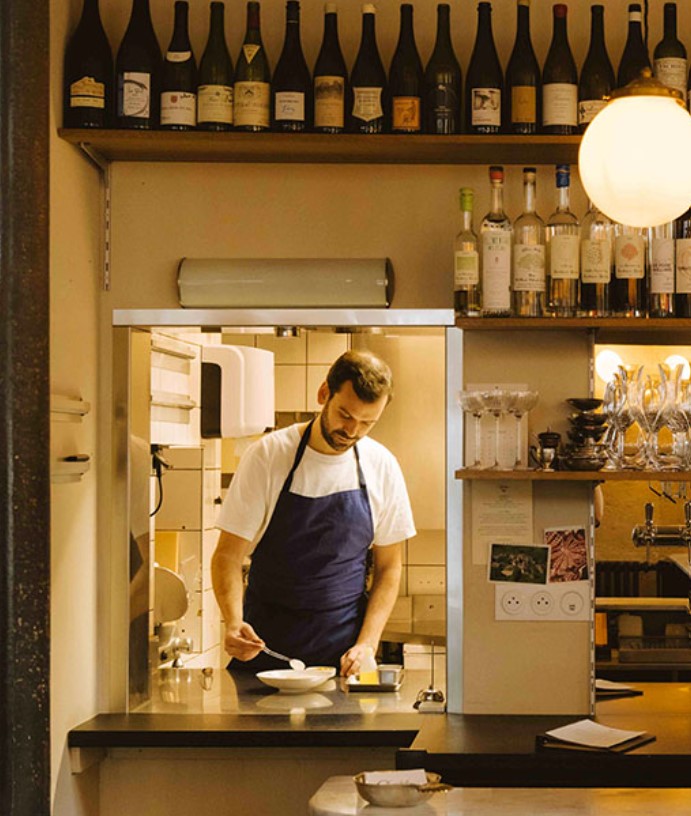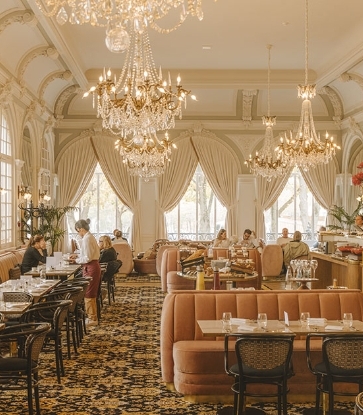Rome’s cuisine is built on simple, humble ingredients — yet its dishes have become global icons. From rich pastas to crisp artichokes and golden supplì, traditional Roman food represents the heart of Italian cooking, blending bold flavors and age-old recipes that locals and visitors love to this day.
1. Roman Pasta Classics: Carbonara, Amatriciana and Beyond
Pasta, of course, tops the list of Roman dishes — and rightly so. Wander through the narrow streets of central Rome and you’ll see tables set beneath awnings, plates of spaghetti glistening in the sun, and tourists gamely twirling their forks in an attempt to master the Italian way.
Carbonara remains Rome’s most beloved pasta — a silky, rich mix of egg, cheese, and shards of crisp guanciale (pork cheek). It’s such a symbol of the city that it even has its own celebration: National Carbonara Day, marked every year on April 6.
Guanciale also stars in amatriciana, tossed with a bright tomato sauce, while pasta alla gricia skips the tomatoes entirely, relying on the alchemy of cured pork and pecorino cheese. For a meat-free alternative, penne all’arrabbiata turns up the heat with tomato, chili, and parsley — simple, fiery, and utterly Roman.
But it's worth keeping in mind that Roman cooking isn’t just all about pasta. Gnocchi alla Romana are a local classic — semolina discs baked in milk and butter until golden and crisp on top. And for something lighter, minestra di arzilla (skate and broccoli soup) offers a comforting glimpse into the city’s home-style cooking traditions. All local staples well worth taking a moment to tuck into.
2. Trippa alla Romana: A Taste of Rome’s Working-Class Tradition
Among Rome’s secondi piatti (main courses), few are as emblematic as trippa alla Romana — the city’s famous tripe stew simmered in tomato, mint, and pecorino cheese. It belongs to a broader tradition known as quinto quarto, or the “fifth quarter,” a term that doesn’t refer to one dish but to an entire philosophy of cooking rooted in thrift and creativity.
Historically, these were the cuts — spleen, heart, lungs, kidneys, and other offal — left to the working classes after the prime meats had gone to the aristocracy. In neighborhoods like Testaccio, once home to the city’s slaughterhouses, cooks transformed these humble leftovers into dishes of extraordinary depth and flavor.
Today, what was once cucina povera is now considered classic Roman fare: trippa alla Romana, rich with herbs and tomato; coda alla vaccinara, a slow-cooked oxtail stew; and coratella, a tender lamb offal sautéed with artichokes or onions. Each speaks to the city’s resourceful past and its enduring love of bold, comforting flavors.
If offal isn’t your thing — Roman cuisine offers plenty of alternatives. Abbacchio, or suckling lamb, is a local favorite, often grilled alla scottadito (literally “finger-burning”) and seasoned with rosemary and olive oil. Saltimbocca alla Romana, thin veal slices wrapped with prosciutto and sage, lives up to its name — “it jumps into the mouth.” You’ll also find comforting meatballs in tomato sauce and fagioli con le cotiche, a rich stew of beans and pork rind.

3. Artichokes: The Jewel of Roman Vegetable Cuisine
In Rome, vegetables often take center stage — none more so than the artichoke, celebrated in two iconic forms: carciofi alla Romana, braised gently with olive oil, garlic, parsley, and mint, and carciofi alla Giudia, deep-fried until crisp and golden. The latter, part of the ancient Judeo-Roman culinary tradition, gleams with a coppery sheen and shatters deliciously at the first bite — a dish as beautiful as it is historic.
Vegetables are woven through Roman cuisine in countless ways. Spring brings vignarola, a tender medley of artichokes, peas, lettuce, and broad beans; puntarelle, the curly shoots of chicory, are tossed with anchovy dressing for a bracing winter salad. You’ll also find cicoria ripassata, pan-fried greens with garlic and chili, and pomodori al riso, tomatoes baked and filled with herbed rice — humble ingredients transformed into small, perfect works of comfort.

4. Supplì: The Snack That Defines Roman Street Food
Fried delicacies abound: courgette flowers, either plain or stuffed with mozzarella and anchovies, and baccalà fritto (fried cod) are perfect for snacking between sightseeing stops. For a heartier bite, porchetta — tender pork stuffed with garlic, herbs, and slow-roasted to crispy perfection — is served in restaurants or sliced into sandwiches for a quintessential Roman takeaway experience.If you’re zipping between museums and piazzas, Rome offers plenty of street-food specialties to enjoy on the move. Chief among them are supplì al telefono — golden, breaded rice balls filled with meat and mozzarella. Tear one open, and the melted cheese stretches like an old telephone wire, giving the dish its playful name.

5. Crostata di Ricotta e Visciole: Rome’s Signature Dessert
Other Roman favorites include maritozzo, a soft brioche generously stuffed with whipped cream, and pizza cresciuta, a light sourdough cake traditionally enjoyed at Easter. On warmer days, locals cool off with grattachecca, shaved ice topped with fruit syrups, a refreshing treat perfect for strolling through the piazzas. For dessert, Rome’s pastoral traditions shine, with fresh ricotta still sourced from flocks grazing on the outskirts of the city. The star is Crostata di Ricotta e Visciole — a golden shortcrust pastry filled with creamy ricotta and tart Morello cherry jam — a sweet that also belongs to the Judeo-Roman culinary tradition.
Hosteria Grappolo d'Oro
Domenico dal 1968
L'Osteria della Trippa
Trattoria Pennestri
Romanè
Poldo e Gianna Osteria
















